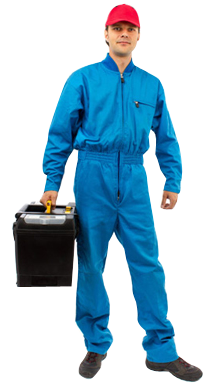|
Maintenance In Door Access System Maintenance is compulsory to ensure the smooth running of a system as according to its original functions and specifications. Even the best equipments require maintenance to function properly over time |
‹ ‹ Back |
|
Maintenance In Door Access System Maintenance is compulsory to ensure the smooth running of a system as according to its original functions and specifications. Even the best equipments require maintenance to function properly over time |
‹ ‹ Back |
| 01. Preventive Maintenance | 02. Corrective Maintenance |

| • | Confirm that there are NO CHANGES in the environment that could influence the life of any of the system parts |
| • | Ensure that there is NO UNDUE WEAR attributed to any of the system components that will cause premature failure or rapid deterioration |
| • | OBSERVE DEVIATIONS from the system record or any unauthorized modifications that may have been made |
| • | Don't forget to record any observations on the system record |
| • | Verify that the system use is being unchanged from the original specification |
| • | Confirm that the building or area has not been developed in anyway that can now compromise the system |
| • | Ensure that the perimeter protection devices remain secure and that no additional access routes exists |
| • | Check whether the LED is blinking, as it is an important indicator to the system health (Dim/No Light means there is an issue within the system) |
| • | Check the electronic door lock to ensure that it is energized while the system is in idle mode and whether the electronic door lock releases when TimeTec Access Hub receives the unlock command from the smartphone or push release button |
| • | Test the door sensor by simulating 'door open', 'door forced open' and 'door left opened' scenario to ensure all conditions are reflected accurately in TimeTec Access Web Portal. |
| • | Check TimeTec Access Hub Bluetooth sensitivity to ensure that smartphone users can send the unlock command from a distance |

| • | Understand the characteristics of the equipment and system that are being worked on |
| • | Understand how the equipment is supposed to operate |
| • | Research the symptoms that give indication of incorrect operation |
| • | Determine the form of failure that is the cause of these symptoms |
| • | Isolate the problem by breaking the system down into parts and eliminating the non-troublesome parts |
| • | Rectify the fault |
| • | Verify that the system once again functions as intended and prove that the correct measures have been taken and that no further problems are in existence |
| • | Record the date and time of receipt of each request for emergency service, together with the date and time of completion of corrective maintenance and the action carried out |
| There will be times when it is not possible to cure a fault immediately. In the event that a temporary disconnection has to be made, this must be recorded. The reason for the disconnection, the date and time of disconnection and of subsequent reconnection must be given. | |
|
Company
|
|
Policies
|
|
Customer Zone
|
|
Popular Links
|